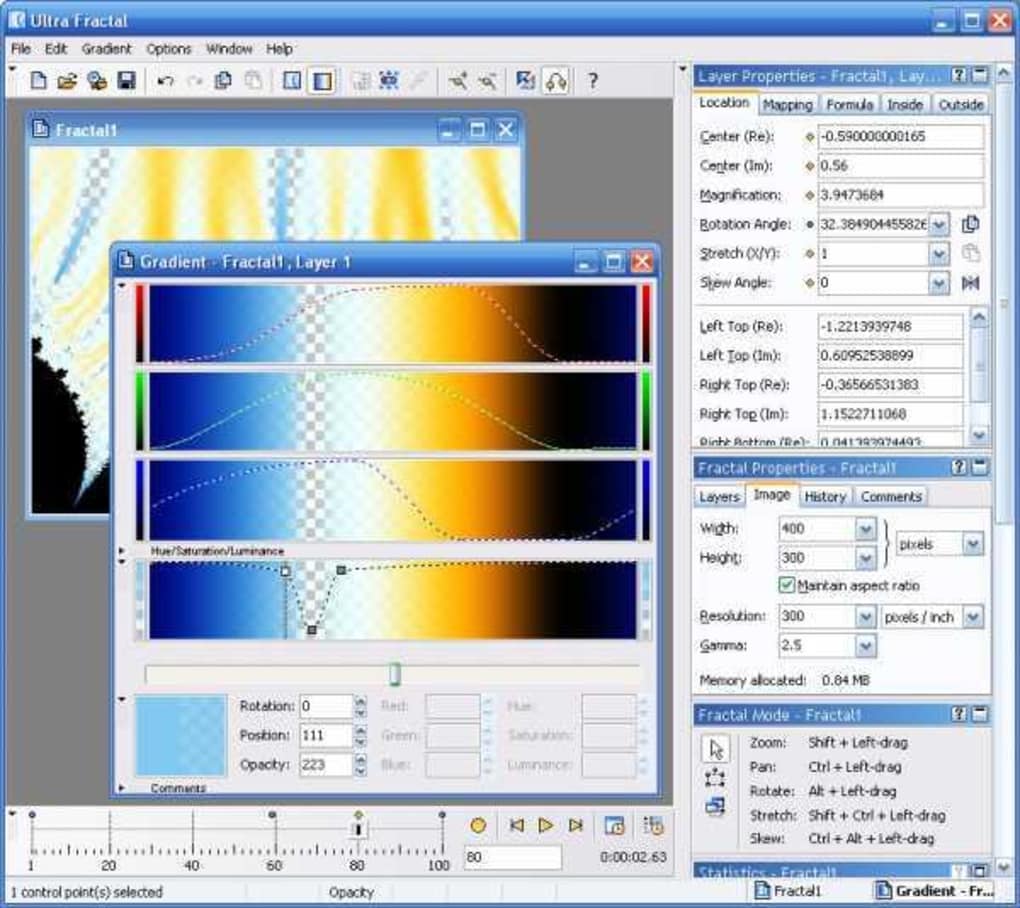

The prerequisites to use it are Python, libvips library, and pyvips (Python binding to access libvips from Python). I' ve created a Python script to perform this task with the Ultra Fractal Files. I was able to join my splitted images taking about 10 minutes each (my system is a bit old).
Free alternative for ultra fractal software#
This software can also perform operations directly in the disk but with much better results than ImageMagick. Then I gived a try to another less known package called libvips. ImageMagick has an option to perform the operations directly on disk at the expense of speed but I wasn' t able to finalize the process. That' s around 28GiB of data in uncompressed form in 24bit RGB and 37GiB in 32bit RGBA. My requirements were also the option to join tiles for the biggest image size currently supported by Ultra Fractal, i.e. Last year I was looking for a solution for this same problem. If you are not familiar with Python and do not require to join very big images you can probably obtain good results using ImageMagick. If there is anyone interested the script is here with comments describing its operation I've created a Python script to perform this task with the Ultra Fractal Files. ImageMagick has an option to perform the operations directly on disk at the expense of speed but I wasn't able to finalize the process. That's around 28GiB of data in uncompressed form in 24bit RGB and 37GiB in 32bit RGBA. Of course, there may be better ways to deal with that – you could check out some options on () for an older version. Magick montage -geometry 200x200 -tile 3x3 Output.pngįor example, if your tiles have the column dimension first, i.e. If this is not the case, you can write a text file listing the images in the expected order and use the first three images would constitute the first row etc.), so the * syntax should work as long as your images are named like this: By default, they are arranged by row (i.e. This assumes the tiles are to be arranged in a 3×3 grid and their size should be 200×200 pixels in the combined image. Magick montage -geometry 200x200 -tile 3x3 Tile*.png Output.png In case you need to do this more often, you may want to take a look at Frederik' s suggestion of (), after all: Combining a matrix of images can be as simple as executing Of course, there may be better ways to deal with that – you could check out some options on this page of examples for an older version. Your text file should look like this: Tile_0_0.png If this is not the case, you can write a text file listing the images in the expected order and use magick montage -geometry 200x200 -tile 3x3 Output.pngįor example, if your tiles have the column dimension first, i.e. the first three images would constitute the first row etc.), so the * syntax should work as long as your images are named like this: Tile_0_0.png Tile_0_1.png Tile_0_2.png In case you need to do this more often, you may want to take a look at Frederik's suggestion of ImageMagick, after all: Combining a matrix of images can be as simple as executing magick montage -geometry 200x200 -tile 3x3 Tile *.png Output.png


 0 kommentar(er)
0 kommentar(er)
